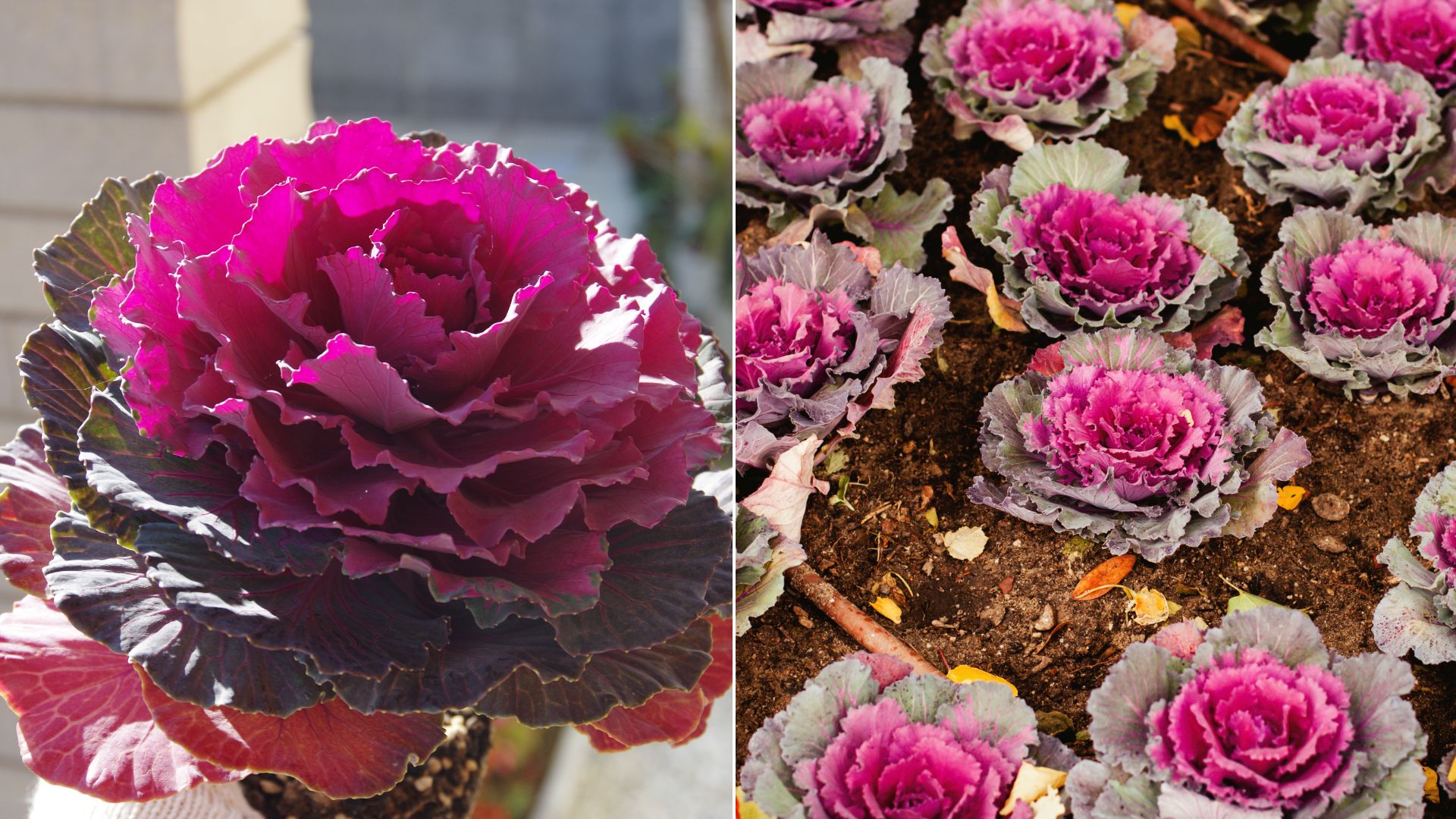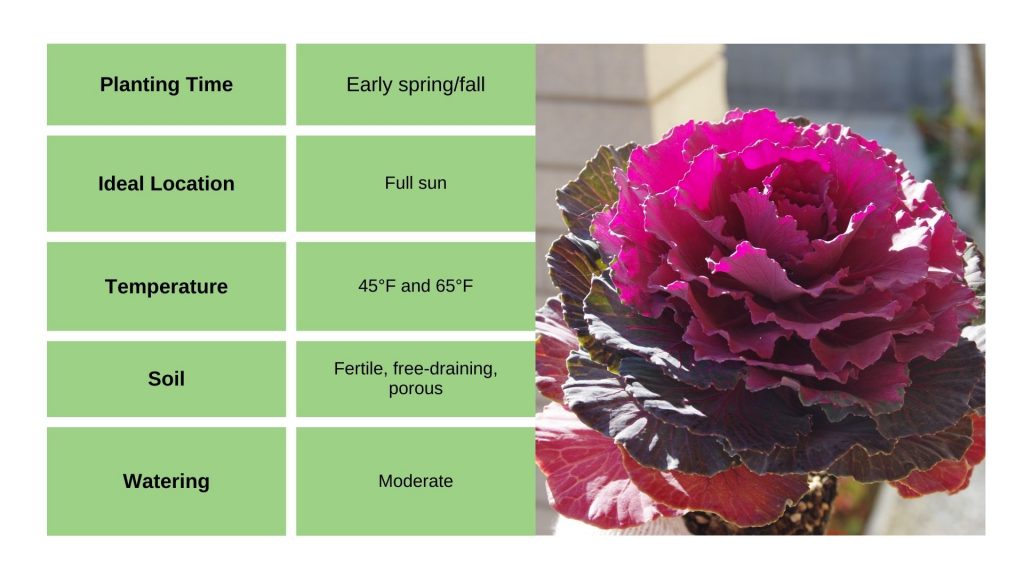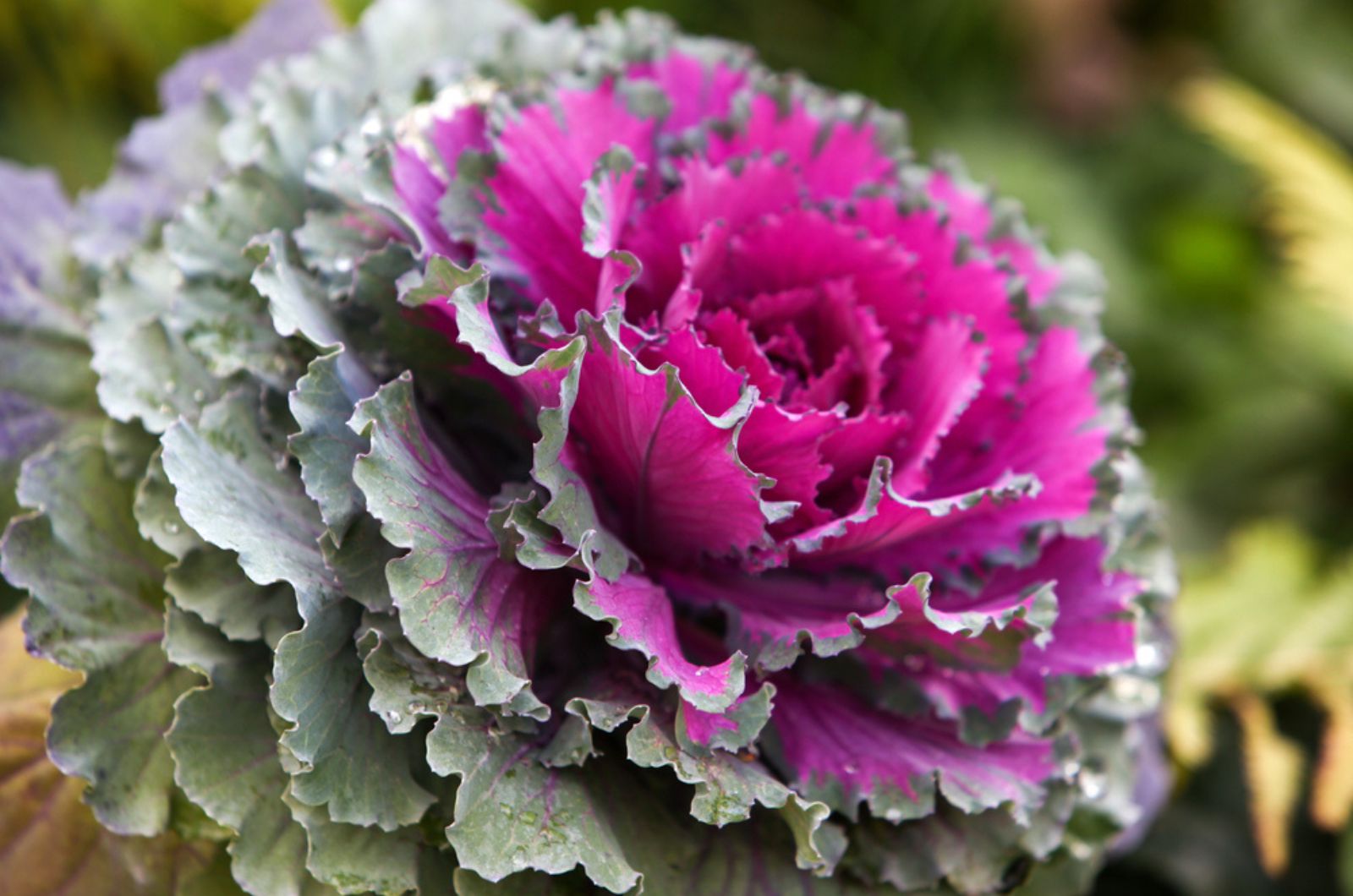Veggies aren’t typically used as ornamental plants. They do look stunning, but we’re mainly focused on their yield. What if I told you that some veggies are used for garden decor rather than for their flavor?
One of the best examples is ornamental cabbage, commonly referred to as flowering kale. This plant features captivating colorful foliage and makes a perfect addition to any winter garden.
Luckily, these plants aren’t hard to maintain and with a few tips and tricks, they can thrive all season long.
In this article, I’ll show you how to grow ornamental cabbage and you’ll also find out why these plants deserve a spot in our gardens.
Let’s get started!
Why Grow Ornamental Cabbage?
The main reason why you should add this plant species to your garden is its spectacular foliage that will add a splash of color to winter landscapes.
You can either grow it in a container or plant it in borders for a more dramatic touch. This is actually one of the most common plants used for keeping winter gardens vibrant and lively.
The rosettes of the leaves come in various hues, from shades of pink and purple to white and red. Interestingly, the colder the temperature, the more prominent the color is.
You may hear some gardeners calling this plant flowering kale, but they aren’t the same species. The main difference is in the leaf shape; the leaves of ornamental cabbage are smooth and flat whereas flowering kale has leaves with more serrated edges.
It has to be mentioned that both species resemble their edible counterparts but they’ve been bred for garden decorative purposes not for the taste.
However, some people use them as a garnish even though the flavor is bitter.
This ornamental plant does best when planted in fall or early spring. They can’t withstand high temperatures, which is the main reason why they’re grown as annuals.
If you decide to grow this species, you can either purchase it in nurseries or grow it from seeds. These plants typically don’t exceed 18 inches in height and width.
How To Grow Ornamental Cabbage
Let’s find out everything about the cultivation of this Brassica plant, from planting to care.
Growing Ornamental Cabbage From Seed
The best time to sow the seeds of this ornamental plant is when the temperatures drop in late summer or early fall.
Put seed compost in a container and bury the ornamental cabbage seeds at a depth of ¼ of an inch. Place the container in a warm spot where temperatures range from 60-70 degrees Fahrenheit and expect the seeds to germinate in about a week or two.
Once you notice the formation of the first true set of leaves, you can start dividing the seedlings and plant each in a separate container.
You should also start fertilizing ornamental cabbage seedlings at this point.
Once the seedlings are a few inches tall, which typically takes around 6 weeks, you can plant them in your garden.
Where To Plant Ornamental Cabbage
No matter if you purchase plants from a nursery or grow them from seeds, you need to be careful when selecting the location.
Garden borders, raised beds, and pots are all good options for planting this ornamental plant, as long as the soil and sun exposure meet its requirements.
Ornamental cabbage plants thrive in fertile and rich soil types with good drainage. You can amend the soil with organic matter or compost before you plant this type of ornamental plant.
These plants love full sun, but if you live in warmer climates you can ensure some shade for your ornamental cabbage to protect it.
Since the spacing between plants plays an important role in their development, ensure approximately 12-18 inches between each ornamental cabbage plant.
The perfect temperature range for these plants is from 45 to 65 degrees Fahrenheit.
Ornamental Cabbage Care Guide
Ornamental cabbage requires consistently moist soil, but you should never allow the water to accumulate. This means that you shouldn’t water already wet soil and you shouldn’t grow this plant in compact soil.
Supplemental feeding isn’t typically required but you can add a layer of mulch around the plant base. You can use leaf mold, compost, or wood chips to help the growing medium retain enough water and prevent weeds from developing.
Ornamental cabbage is susceptible to pests that typically attack Brassica veggies. Aphids, slugs, and caterpillars may affect your plant, so you’ll need to inspect it regularly.
If you notice any pests, you can treat them with insecticidal soap or use other pest control techniques.
White mold and downy mildew are the two most frequent diseases that attack this cabbage plant. Luckily, you can easily prevent these diseases by ensuring the recommended spacing and planting your ornamental cabbage in a free-draining and porous soil type.
These plants can survive temperatures down to 5 degrees Fahrenheit, which means they’re suitable for cultivation in cooler climates. Some gardeners grow these plants as biennials but the majority remove them entirely from the ground once spring arrives.
Winter gardens often lack color primarily because many plants can’t withstand cool temperatures. However, ornamental cabbage is proof that winter gardens can be colorful and lively.
Follow our guidelines for planting and maintaining and enjoy the stunning appearance of this unusual plant all winter long!



